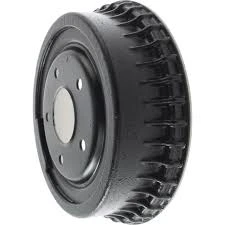Màrt . 07, 2025 04:05
Air ais dhan liosta
how to use drum brake tool kit
Effective use of a drum brake tool kit is essential for automotive enthusiasts and professional mechanics alike. Drum brakes, although less common than disc brakes in modern vehicles, are still widely used on older cars and in various industrial applications. This comprehensive guide delves into the nuances of using a drum brake tool kit, focusing on user experience, professional expertise, authoritative knowledge, and trustworthy practices.
Attention must be given to the star wheel adjuster, responsible for maintaining the correct distance between shoes and drum. Use the adjuster tool from the kit to rotate the wheel, setting the appropriate tension. A correctly adjusted star wheel ensures the brakes function smoothly and reduces the wear on components. Throughout this process, maintain an organized work area. Keep fasteners and small components in trays or magnetic dishes to prevent loss. Inspect each part thoroughly; replacing any worn or damaged components is critical for optimal brake performance and safety. Reassembly is the culmination of your efforts. Reverse the disassembly steps, using the drum brake tool kit to reattach springs and adjust the star wheel. Ensure all components are securely in place before fitting the drum back onto the assembly. Once the drum is fitted, a test of the brake system is recommended to verify that everything operates correctly. This can include spinning the wheel to check for drag and applying the brake pedal to ensure the shoes engage smoothly. Professional mechanics and seasoned DIYers understand that patience combined with the correct tools and knowledge results in successful brake maintenance. The authoritative use of your drum brake tool kit not only prolongs the life of your braking system but also enhances road safety. In conclusion, mastering the use of a drum brake tool kit involves understanding each tool's specific function and applying it with precision and care. With appropriate skill and technique, even intricate systems like drum brakes can be maintained to a high standard, ensuring reliable vehicle performance and safety on the road. This expert approach also builds trust with clients and reinforces your credibility as a knowledgeable and proficient automotive specialist.


Attention must be given to the star wheel adjuster, responsible for maintaining the correct distance between shoes and drum. Use the adjuster tool from the kit to rotate the wheel, setting the appropriate tension. A correctly adjusted star wheel ensures the brakes function smoothly and reduces the wear on components. Throughout this process, maintain an organized work area. Keep fasteners and small components in trays or magnetic dishes to prevent loss. Inspect each part thoroughly; replacing any worn or damaged components is critical for optimal brake performance and safety. Reassembly is the culmination of your efforts. Reverse the disassembly steps, using the drum brake tool kit to reattach springs and adjust the star wheel. Ensure all components are securely in place before fitting the drum back onto the assembly. Once the drum is fitted, a test of the brake system is recommended to verify that everything operates correctly. This can include spinning the wheel to check for drag and applying the brake pedal to ensure the shoes engage smoothly. Professional mechanics and seasoned DIYers understand that patience combined with the correct tools and knowledge results in successful brake maintenance. The authoritative use of your drum brake tool kit not only prolongs the life of your braking system but also enhances road safety. In conclusion, mastering the use of a drum brake tool kit involves understanding each tool's specific function and applying it with precision and care. With appropriate skill and technique, even intricate systems like drum brakes can be maintained to a high standard, ensuring reliable vehicle performance and safety on the road. This expert approach also builds trust with clients and reinforces your credibility as a knowledgeable and proficient automotive specialist.
Roimhe:
Air adhart:
Na naidheachdan as ùire
-
The Power and Reliability of Brake DrumsNaidheachdanAug.27,2025
-
The High-Quality Truck Brake DrumsNaidheachdanAug.27,2025
-
Quality Brake Drums for Reliable PerformanceNaidheachdanAug.27,2025
-
Get the Quality Semi Trailer Brake Drums for Your FleetNaidheachdanAug.27,2025
-
Everything You Need to Know About Brake DrumsNaidheachdanAug.27,2025
-
Enhance Your Vehicle's Performance with Reliable Brake DrumsNaidheachdanAug.27,2025
-
Truck Drum Brake Spring Replacement ProcedureNaidheachdanAug.22,2025


